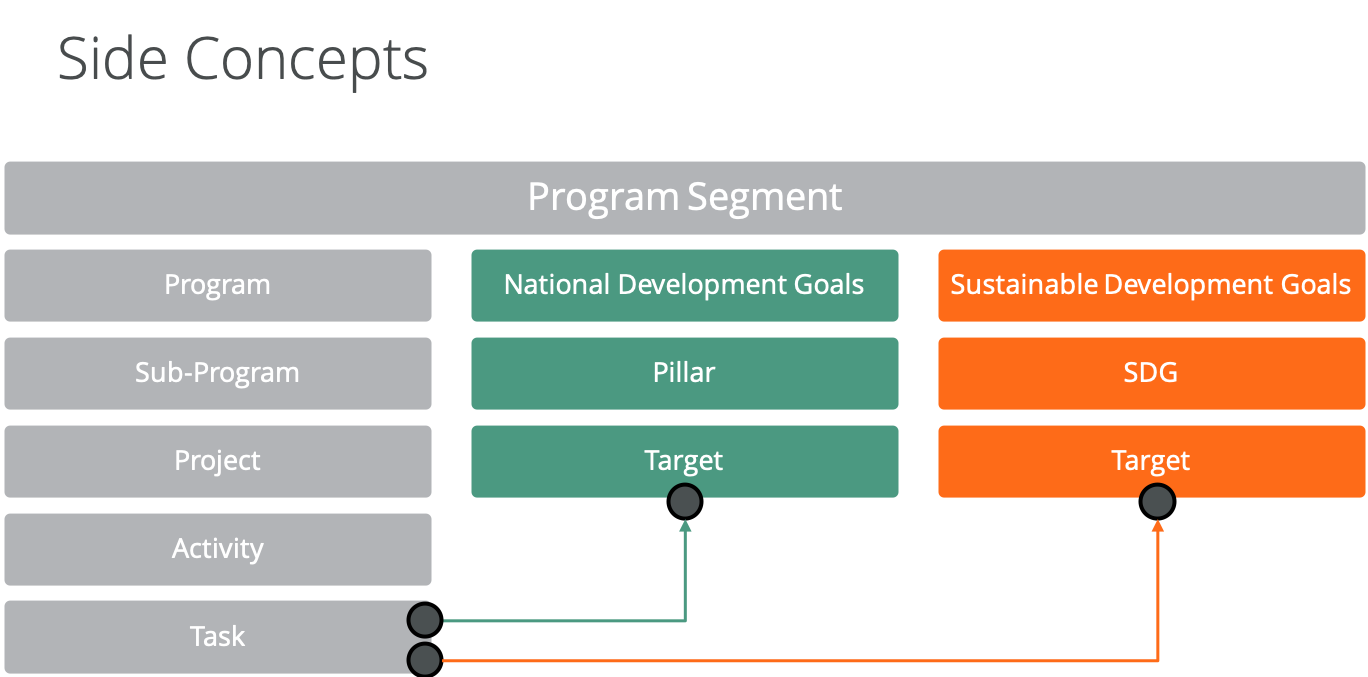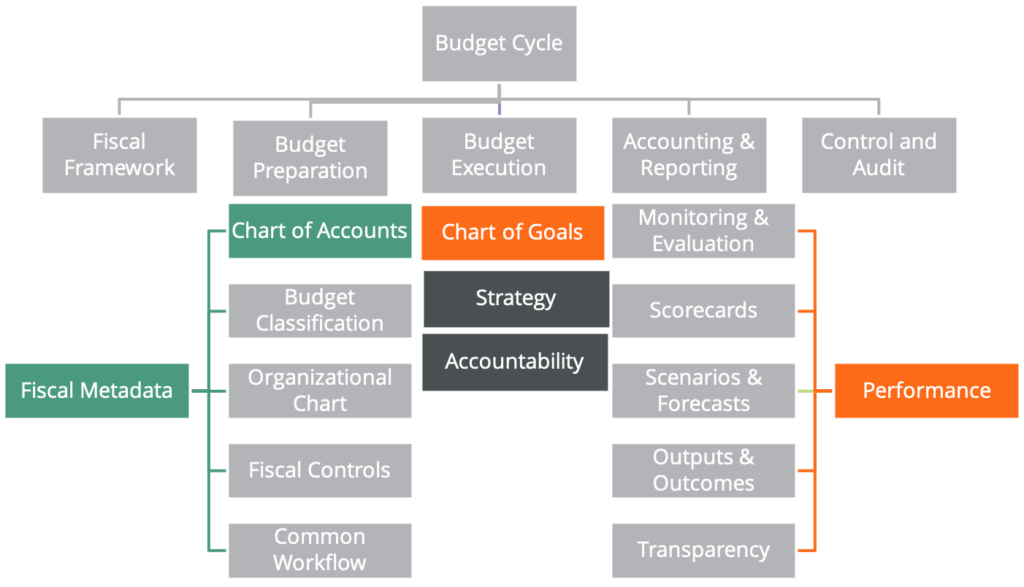There is a better way to support Public Expenditure and Financial Accountability (PEFA) good practices
Doug Hadden, EVP Strategy & Innovation
How can an Integrated Financial Management Information System (IFMIS) meet PEFA needs? This was discussed last week at PEFA Flagship Training, primarily from attendee questions. By Wednesday morning, I was tagged: #TheIFMISGuy. That’s the kind of tag that might stick, unlike traditional tagging in software.
Coincidentally, the integration of government objectives into the FreeBalance Accountability SuiteTM was discussed at our steering committee last month in Timor-Leste. Gender and climate policy planning, monitoring, and evaluation is accomplished in FreeBalance software through the integration of the Chart of Accounts and the Chart of Goals. Not “tagging” as traditionally accomplished in commercial Enterprise Resource Planning (ERP).
This integration between financial and performance metadata was a fundamental lesson learned from our government customers going back to 1984. It helps to focus exclusively in Public Financial Management (PFM) to understand unique challenges to budget and track government performance…from decades before the UN Sustainable Development Goals (SDGs).
Is tagging the solution that you are looking for?
Many ERP systems support the notion of tagging to enable reporting by arbitrary or emerging classifications. But they have no way of making tags mandatory or accurate. This tagging operates outside the Chart of Accounts (CoA). That’s because commercial ERP systems do not support multiple-year CoA changes. Among the deficiencies mentioned by attendees at PEFA training were:
- Ensuring that all users used the required tags every time
- Aligning existing classifications that relate to gender and climate responsive financing with tags
- Tracking gender and climate results to spending.
PEFA Secretariat Recommendations for Climate-Responsive Budgeting
O PEFA Climate Framework introduces a structured approach to evaluate how PFM systems support the implementation of climate change policies. A key component of this framework is the Climate Budget Tagging (CBT) mechanism. This mechanism involves identifying and tracking climate-related expenditures throughout the budget cycle.
Key Recommendations
- Flexible tagging levels: The framework acknowledges that tagging can occur at various levels (program, project, or activity) depending on the government budget structure. The choice of tagging level should align with government capacity and existing systems.
- Integration into budget processes: CBT should be embedded within the budget formulation and execution processes to ensure that climate considerations are systematically accounted for in fiscal decisions.
- Use of tagging data: The data generated from CBT should inform policy-making, facilitate monitoring and evaluation of climate-related expenditures, and support reporting on commitments such as Nationally Determined Contributions (NDCs) under the Paris Agreement.
PEFA Secretariat Recommendations for Gender-Responsive Budgeting
O PEFA Gender Framework provides a methodology to assess how PFM systems incorporate gender considerations. The PEFA Secretariat outlines practices for tagging and tracking gender-related expenditures to promote gender equality through fiscal policies.
Key recommendations:
- Gender budget statements: Budgetary units are encouraged to prepare statements that outline the gender impacts of proposed budget policies. These statements should be based on gender analysis and include specific objectives and indicators.
- Expenditure tracking: Governments should establish mechanisms to track expenditures aimed at promoting gender equality throughout the budget cycle. This involves tagging relevant budget lines and monitoring their implementation.
- Relatório de desempenho: Annual reports should include information on gender-related outcomes, expenditures, and assessments of the effectiveness of gender-responsive policies and programs.
How does FreeBalance overcome tagging deficiencies?
FreeBalance provides a multiple-year CoA design. This means that any limitations to track climate and gender budgeting within budget classification structures can be overcome via configuration. The optimal approach within the FreeBalance Accountability SuiteTM is through the CoA:
- Segmento do programa: use or add a program segment with a structure that includes hierarchical concepts from program to task, although this can be initially implemented without detailed levels
- Existing classifications: map these new classifications to existing classifications that includes gender and climate.
- Side concepts (see below): create alternative reporting structures by mapping these concepts to relevant items in the CoA (including supporting national development strategy, SDGs, gender, climate (& NDCs), wellbeing etc) so that users do not need to understand these structures – this is also how Classification of the Functions of Government (COFOG), Governmental Accounting Standards Board (GASB), Government Financial Statistics (GFS), and International Public Sector Accounting (IPSAS) are also supported
- Combinações de código válidas: configure controls to ensure proper data entry for accuracy in budgeting and spending information

The Chart of Goals (CoG) functionality enables governments to set output and outcome targets at any level of the government CoA. Governments add these to the CoG to show results.

The CoA and CoG configuration functionality supports:
- Budget classifications for gender and climate metadata in the CoA – and, for all other government priority structures, including overlapping structures
- Controls, compliance, and validation built in for quality information
- Output and outcome targets and results integrated
- Full budget cycle from planning to results
- Validated data for the GRPFM and GRPFM PEFA assessments.
Want to find out more about how the FreeBalance Accountability SuiteTM can help to monitor performance against PEFA’s Gender Responsive PFM and Climate Responsive PFM frameworks? Speak to one of our Especialistas em PFM to organize a demo.
